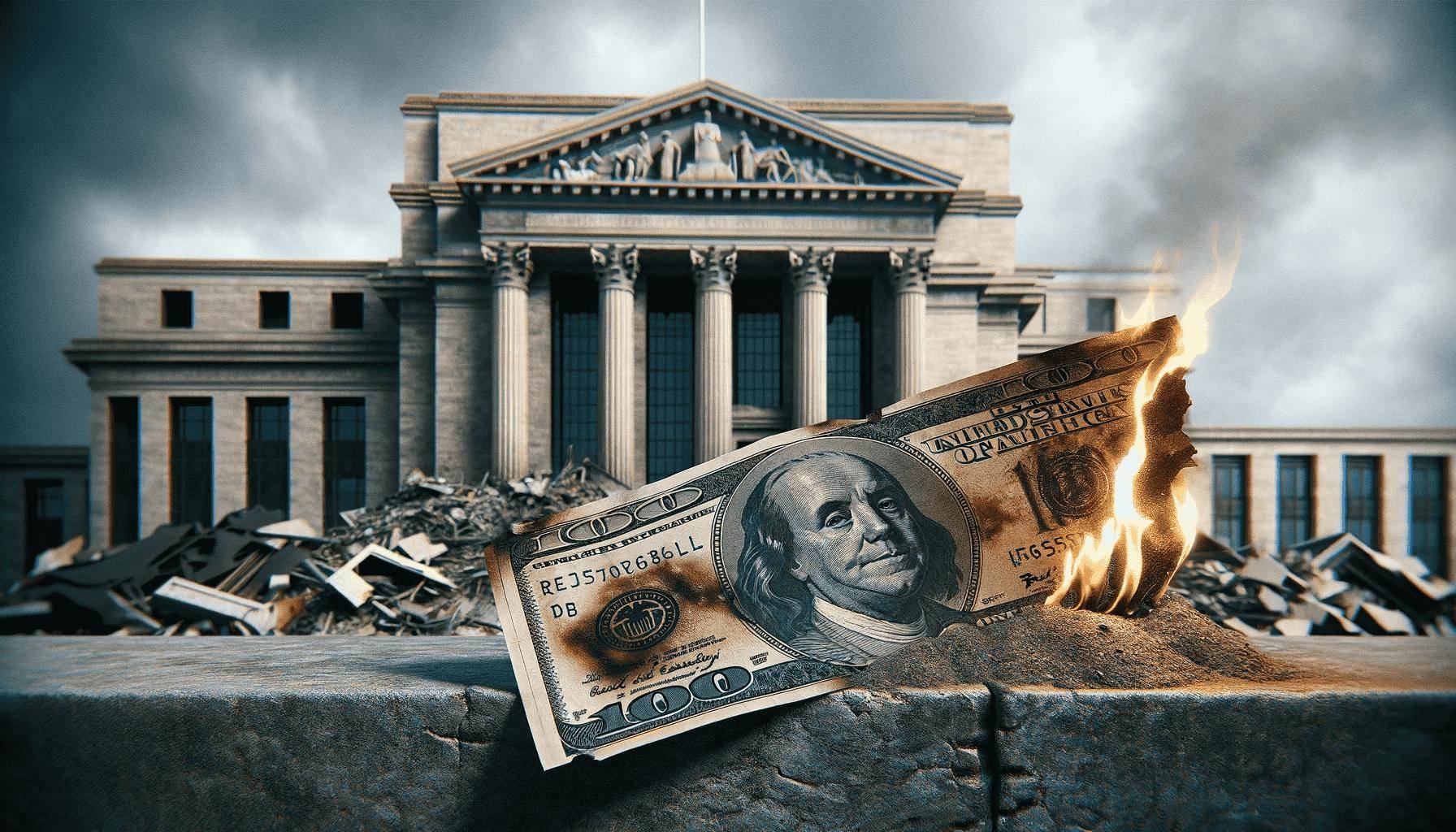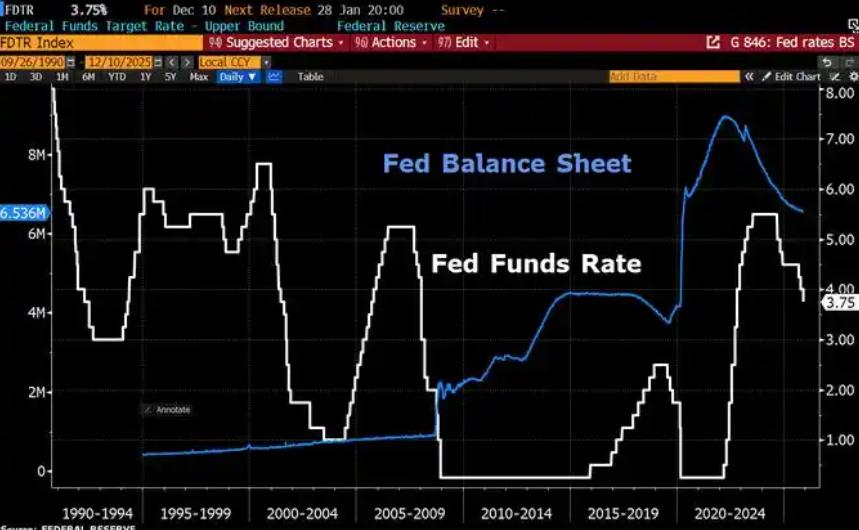
The US Treasury Secretary warned that between January 14 and 23 today, the United States will hit the debt ceiling and fall into the risk of default, and according to the latest data from the US Treasury Department on the 14th, the US federal government budget deficit reached 711 billion US dollars in the first quarter of the fiscal year 2025 (the fourth quarter of last year), an increase of 40%, and government spending climbed to 180 million US dollars. At the same time, the US Congressional Budget Office (CBO) predicts that the US fiscal deficit for the next few years will remain at a high level of more than 4.5% since 1930.
Not only occasionally, the high debt deficit ratio makes the international community more worried at the same time, the huge debt pressure of nearly 3 trillion short-term Treasury bonds maturity and the soaring US Treasury bond yield generated by the hawkish interest rate cut expectation of the Federal Reserve have triggered volatility in the financial market. Specifically, as of the 13th, the US 10-year Treasury bond yield was 4.80%. The 2-year Treasury bond yield is 4.16%, while the 30-year Treasury bond yield is as high as 4.93%. At the same time, the correlation between the rise in US Treasury bond yield and the S&P 500 index has turned into a "clear negative correlation", and investors have taken financial hedging from the stock market to the bond market, thus limiting the rise space of US stocks and even triggering the risk of a downward crash.
With the re-emergence of the Trump administration, its fiscal stimulus policy and the imposition of external tariffs have increased inflationary pressure at the same time, further raising US bond yields, although the Federal Reserve began a rate cut cycle last year, the market expects that the Federal Reserve may continue to maintain tight policies in 2025 to cope with the inflationary pressure brought about by the economic recovery. However, this expectation has not completely eliminated market concerns about the high interest rate environment, especially in the face of widening fiscal deficits and rising debt levels, and investors are increasingly concerned about the fiscal sustainability of the United States, prompting investors to demand higher yields to compensate for potential inflation risks.
In recent years, the US government has issued a large number of short-term Treasury bonds to deal with the fiscal deficit, resulting in the rapid expansion of the debt scale, by 2025, the US national debt scale is expected to reach 36 trillion US dollars, which makes the fiscal deficit and debt interest expenses continue to increase, and with the rise of inflation pressure, the US Treasury shorts occupy a dominant position in the market. Wall Street capital investors bet that the yield will continue to rise, which further intensifies the volatility of the financial market, which may lead to an unprecedented "financial storm" in the market. In general, the surge in US bond yields not only reflects the market's concern about the US fiscal and economic conditions, but also poses a serious threat to the stability of the financial market.
First, the US stock market is under increasing pressure. The rise in US bond yields usually leads to pressure on the stock market, since the market opened today, the three US stock indexes opened higher and lower, sharply fluctuated and plunged, and showed an inverted deformed curve, Goldman Sachs and Morgan Stanley and other institutions warned that the US stock market will face a challenging period of six months, with the US inflation expectations heating up and the Federal Reserve interest rate hike expected analysis, Broader Wall Street investors would reduce their exposure to stocks in favor of safe-haven bonds, causing big swings in U.S. stock markets that could hit rate-sensitive technology stocks in particular.
Second, the housing market has suffered. The rise in US bond yields has led to a rise in mortgage rates, which has dampened the performance of the real estate market. According to statistics on the 9th, the sales price of existing homes in the US fell to the lowest level in 13 years, and high interest rates have increased the cost of buying homes and reduced the demand for housing, which has had a negative impact on the real estate market.
Third, the risk of corporate debt defaults is increasing. 12 Multi-party data show that the number of bankruptcies of US enterprises due to high interest rates and high inflation has increased significantly. With the rise of interest rates, the financing cost of enterprises has increased, and the debt default rate has also risen. Although the proportion of US enterprises using long-term debt has declined in the past decades, the repayment pressure of short-term debt is still large, according to the analysis of jpmorgan Chase. Although the bottom of the current credit cycle has not yet been reached, it is expected that by the second quarter of 2025, the default rate of high-grade loans will rise to 3.4%, in addition, in a high interest rate environment, high-yield bond holders will face greater pressure to repay their debts, further increasing the instability of financial markets.
Finally, financial market volatility has increased. The rapid rise in US bond yields has triggered a global "bond market storm", which has hit the stock market, bond market and commodity markets such as gold and crude oil. This volatility not only affects investor confidence, but also may trigger a broader financial crisis.
In short, the increase in financial market volatility and increased fiscal stress caused by the surge in US Treasury yields pose a threat to the overall stability and growth prospects of the US economy that cannot be ignored, and central banks need to closely monitor interest rate movements and adopt appropriate policy tools to stabilize financial markets and economic growth. At the same time, investors need to be careful to deal with market fluctuations in a high interest rate environment and adjust asset allocation to reduce risks.

Since 2022, the Fed has cumulatively reduced its balance sheet by $2.4 trillion through quantitative tightening (QT) policies, leading to a near depletion of liquidity in the financial system.
Since 2022, the Fed has cumulatively reduced its balance sh…
On December 11 local time, the White House once again spoke…
Fiji recently launched its first green finance classificati…
Recently, the European Commission fined Musk's X platform (…
At the end of 2025, the situation in the Caribbean suddenly…
The U.S. AI industry in 2025 is witnessing a feverish feast…